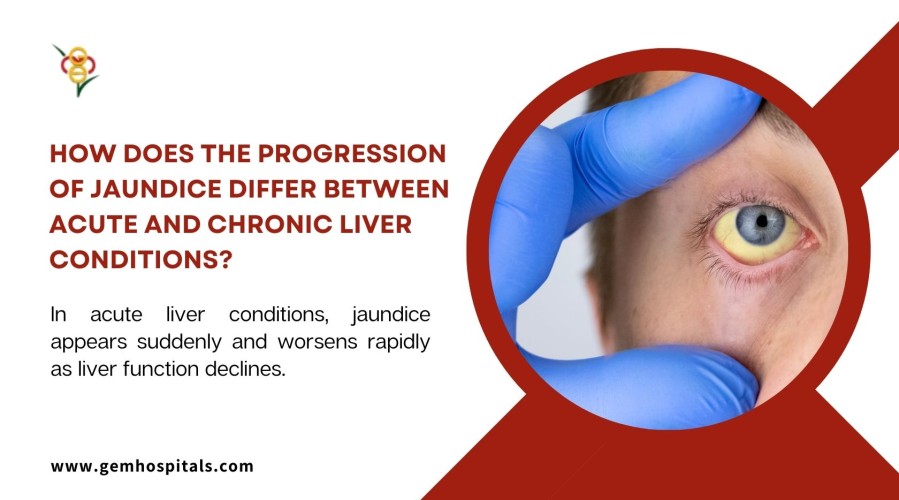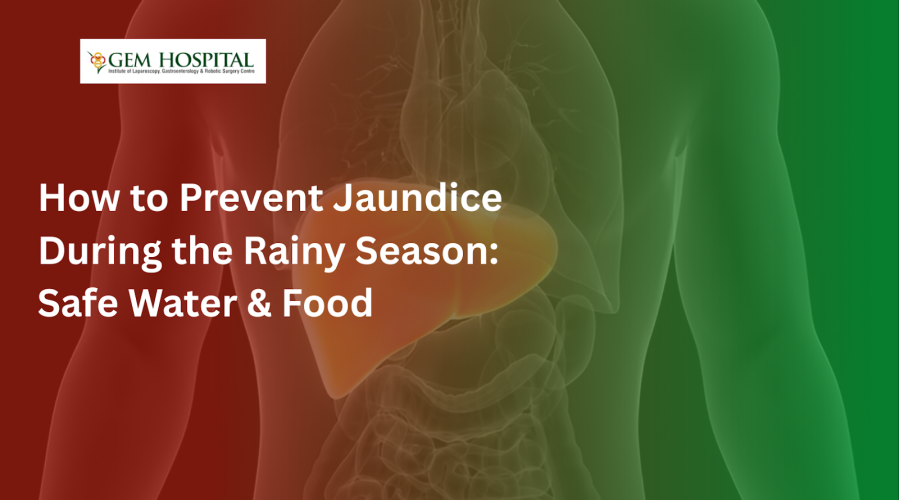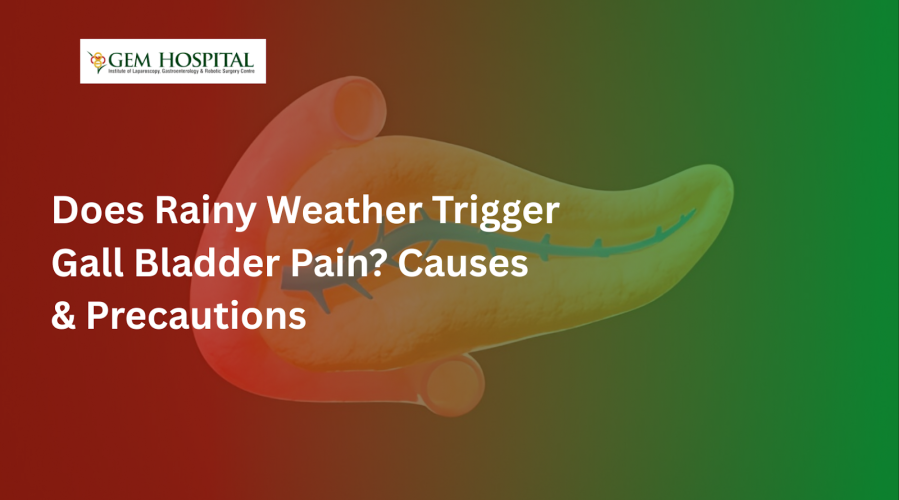Learn how to prevent jaundice during the rainy season with simple safe water practices and healthy food habits. Discover key hygiene measures, diet precautions, and monsoon safety tips to protect your liver and overall health.
How does the progression of jaundice differ between acute and chronic liver conditions?

Jaundice is a health condition that affects the function of the liver and it is characterized by yellowing of skin and eyes. This is mainly due to the buildup of bilirubin in the bloodstream, during the natural processes of the body it will be excreted from the body with the bile but when the liver can’t function well the accumulation of bilirubin may be possible, leading to jaundice. Bilirubin is a yellow pigment produced from the breakdown of red blood cells and excreted by the liver. This is a condition that requires proper treatment usually the progression rate of jaundice significantly varies between the acute and chronic liver conditions. Having the proper understanding differences between them is crucial for diagnosing, managing, and treating patients effectively.
Understanding acute vs. chronic liver conditions
Before exploring how jaundice progresses in acute and chronic liver conditions, it is important to define the differences between these two types of liver diseases:
Acute liver conditions refer to sudden and rapid onset liver dysfunction. This can be triggered by infections (like viral hepatitis), toxins, or autoimmune responses. Acute liver diseases develop over days or weeks, and in many cases, they can be resolved with treatment.
Chronic liver conditions are long-term and develop slowly over months or even years. These include diseases such as cirrhosis, chronic hepatitis, non-alcoholic fatty liver disease, and alcoholic liver disease. Chronic liver diseases gradually lead to liver scarring and irreversible damage, often with progressive worsening over time.
Progression of jaundice in acute liver conditions
In acute liver conditions, jaundice tends to appear quickly and progresses rapidly. The progression of jaundice in these cases is tied directly to the severity of the acute liver injury. Based on the below listed criteria jaundice progression rate occurs in acute liver conditions,
- The key hallmark of jaundice in acute liver conditions is its sudden onset. The condition often appears within days or weeks of liver damage. In cases of viral hepatitis, jaundice may develop as an early symptom of infection, often accompanied by other signs such as fever, nausea, vomiting, and abdominal pain.
- In acute liver conditions, jaundice can escalate quickly, depending on the underlying cause. For example, in cases of acute hepatitis, bilirubin levels may rise rapidly within a short period, leading to noticeable yellowing of the skin and eyes. However, with prompt diagnosis and treatment, jaundice in acute liver conditions can often be reversed.
- A key feature of jaundice in acute liver conditions is its potential for reversibility. With proper medical intervention, such as antiviral medications for viral hepatitis or supportive care for acute liver failure, the liver can often regain function, and jaundice will gradually resolve as bilirubin levels normalize.
Progression of jaundice in chronic liver conditions
Jaundice in chronic liver conditions follows a slower, more insidious course. Unlike acute liver diseases, where jaundice may appear suddenly, jaundice in chronic liver conditions develops gradually, often as a sign of advanced liver damage. Based on the below listed criteria jaundice progression rate occurs in acute liver conditions,
- In chronic liver diseases such as cirrhosis or chronic hepatitis, jaundice usually does not present until significant liver damage has occurred. Over time, as liver function deteriorates, the liver’s ability to process bilirubin declines. Patients may remain asymptomatic for months or years, even as liver fibrosis (scarring) progresses.
- Jaundice in chronic liver conditions progresses slowly compared to acute conditions. This gradual progression reflects the slow development of liver fibrosis and eventual cirrhosis. Patients with chronic liver disease often experience other symptoms before jaundice appears, such as fatigue, weight loss, abdominal swelling, and gastrointestinal bleeding.
- Unlike acute liver conditions, where jaundice can be reversed with proper treatment, jaundice in chronic liver conditions is often a sign of irreversible liver damage. In advanced stages of cirrhosis, for example, the liver’s ability to regenerate is severely compromised, and jaundice may persist or worsen over time.
While you are witnessing something fishy in your skin or eye color or any other abnormal symptoms it is good to consult a healthcare provider they may help you in diagnosing the underlying health issue like jaundice.
Blogs & Article
Understand why rainy weather may trigger gall bladder pain. Explore the causes, symptoms, and essential precautions to manage discomfort during monsoon season. Learn how humidity, diet changes, and infections influence gallbladder health.
Discover essential rainy season diet tips for patients with fissures and understand why gallbladder pain increases during the monsoon. Learn what foods to avoid, what to include, and how to maintain digestive health in humid weather.


